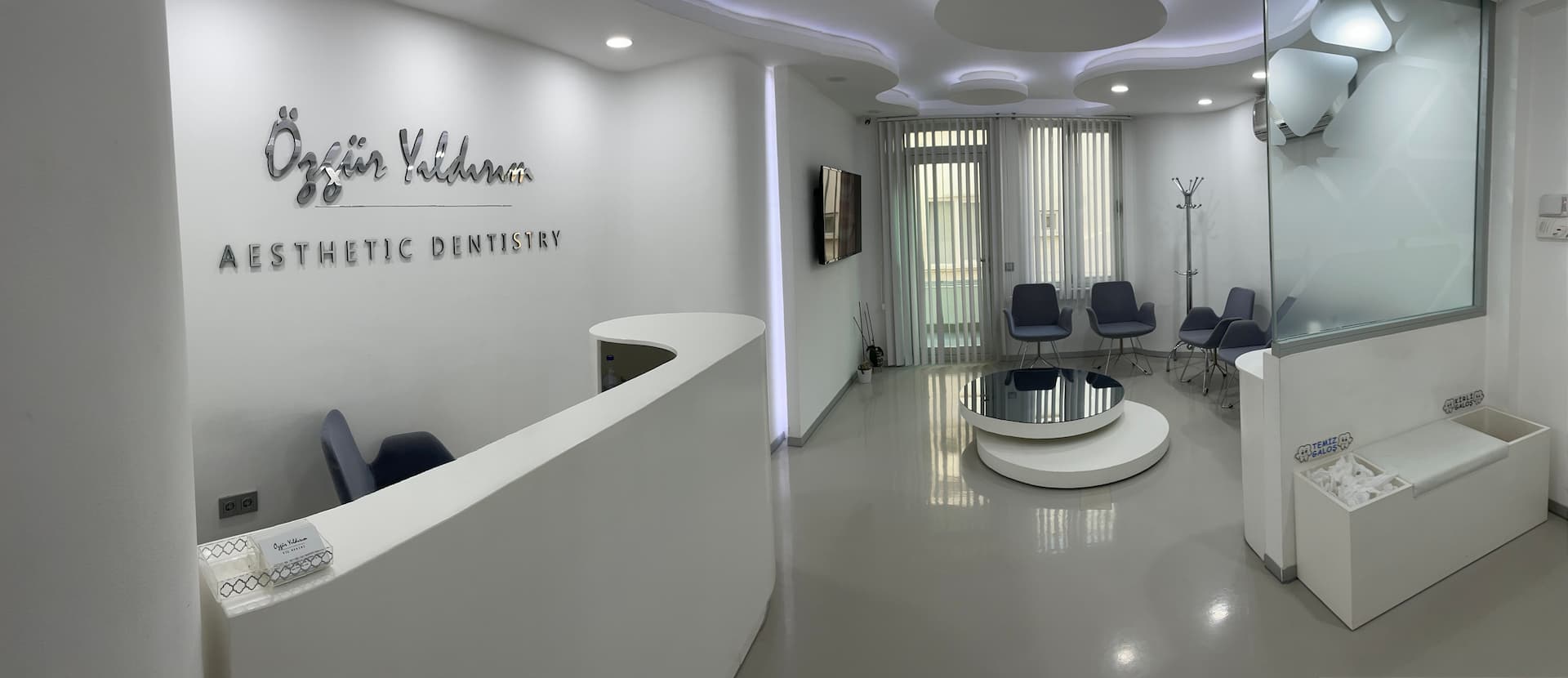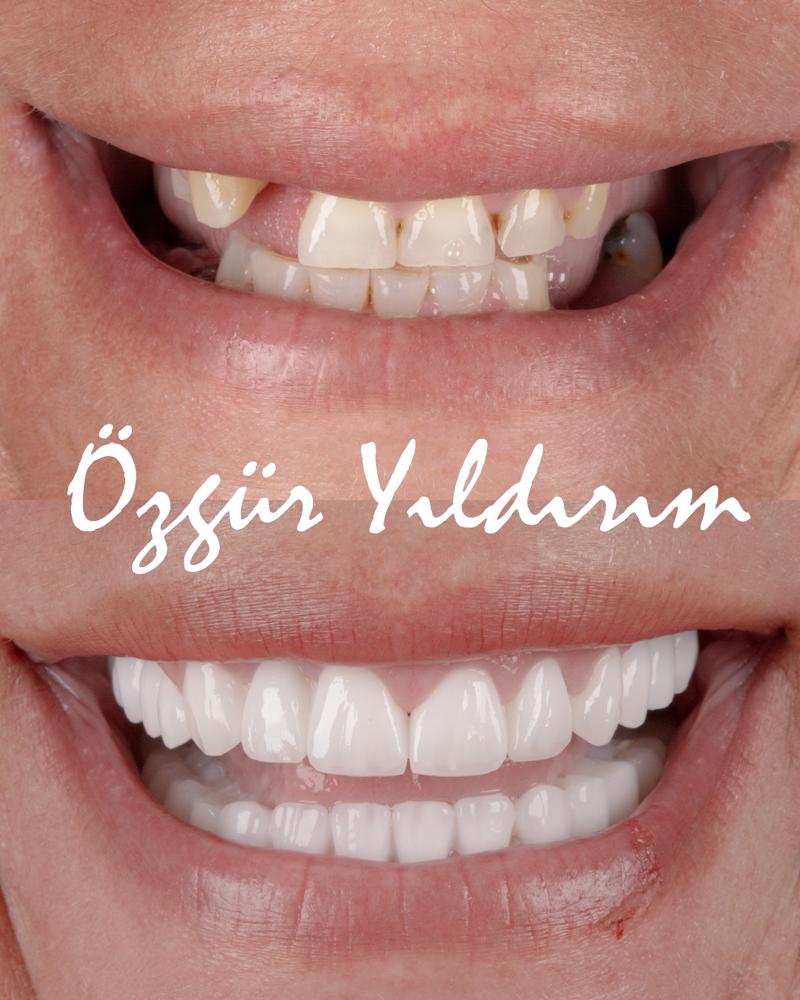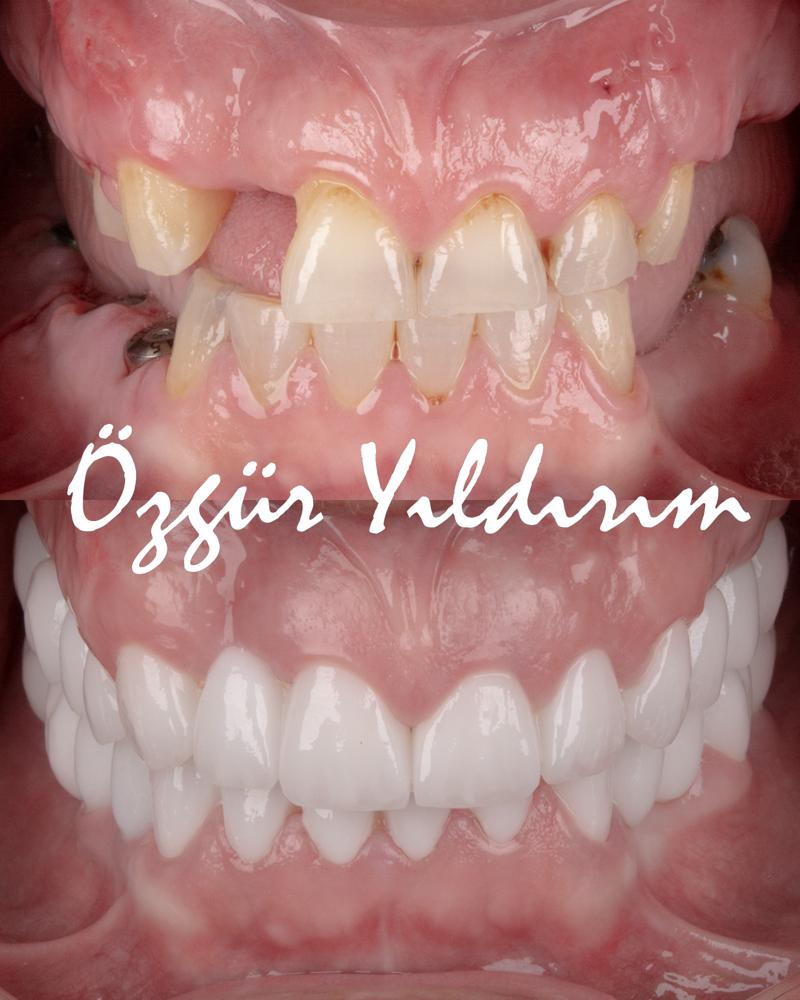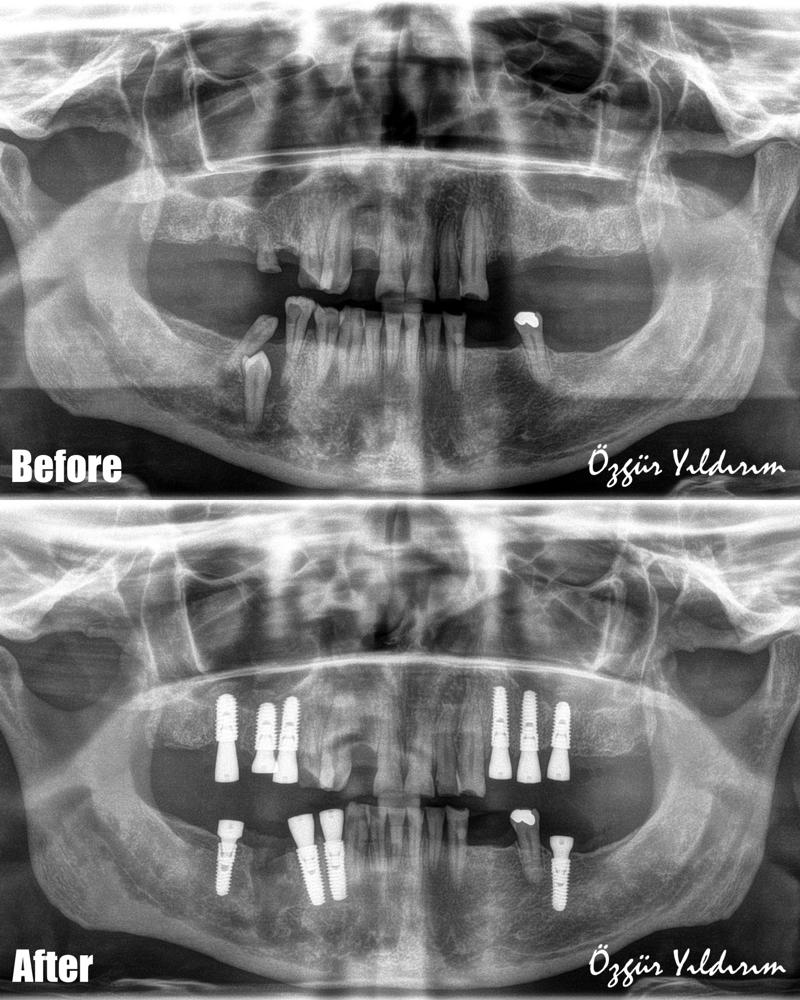
Dental Implants
Implants are artificial tooth roots made of high-tech titanium, suitable for tissue, placed in the jawbone to restore the function and aesthetics of missing teeth.
Implants provide you with a much smoother and natural smile, speaking ability and effective chewing function.
There is no age restriction in implant treatment. It is suitable for patients of all ages. It is only necessary to wait for the completion of bone development for young people.
Situations where implants are made
One or more tooth deficiencies:
Treating single tooth deficiencies with an implant is a more protective treatment than restoration with a bridge. In order to make a bridge prosthesis, healthy teeth will have to be reduced and covered, and this bridge requires replacement at regular intervals, which is a separate economic burden. Instead, thanks to the missing teeth or implants to be placed in the cavity of the teeth, the treatment can be completed without the need for any treatment on the adjacent teeth, that is, without damaging the healthy teeth.
Total edentulism:
If there is no tooth left in the mouth, if a removable denture cannot be used due to the nausea reflex and insufficient retention of the prosthesis, it is very easy to make fixed restorations with implant-supported prostheses and restore the person's natural chewing function, smile and speaking ability.
STAGES OF IMPLANTATION
1- Oral examination and planning
During the examination phase, a detailed oral examination is used to examine the gums, the relationship of the lower and upper jaw and teeth with each other. The number of implants to be applied are determined by the combined work of the maxillofacial surgeon and the dentist. In addition to classical radiographs, in complicated cases, three-dimensional tomography is taken and the same size model of the jaw is obtained in a special device, and the areas where the implants will be placed are planned with the least error.
2- Placement of the implant
For a good treatment, correct planning comes first. Undoubtedly, it is very important that the operation is performed by sufficient equipment and an experienced team. Implants are applied with local anesthesia like other dental treatments. However, in some cases, such as extremely stressed patients or in long operations where the jawbone is not sufficient and the tissue addition which is called grafts is required the operation is performed comfortably under general anesthesia or sedation. The incision is made over the gum and the slot where the implant will be placed is opened in the bone with appropriate tools. The implant is placed in this slot using special tools. The procedure may take between 30-60 minutes depending on the number of implants to be applied.
3- Healing phase
After the implant is placed, a certain time must pass for it to integrate with the bone. This period is about 2 months for the lower jaw and 3 months for the upper jaw. During this time, sometimes a temporary prosthesis is applied to the patient. Patients can feed normally on the implants without direct chewing burden.
4- Making Prosthesis
After the healing period is completed and the implant periphery is completely filled with new bone, the superstructure is placed on the implant. The impression is taken for the previously planned prosthesis. The prosthesis can be made as a single crown, bridge, partial or full prosthesis.






